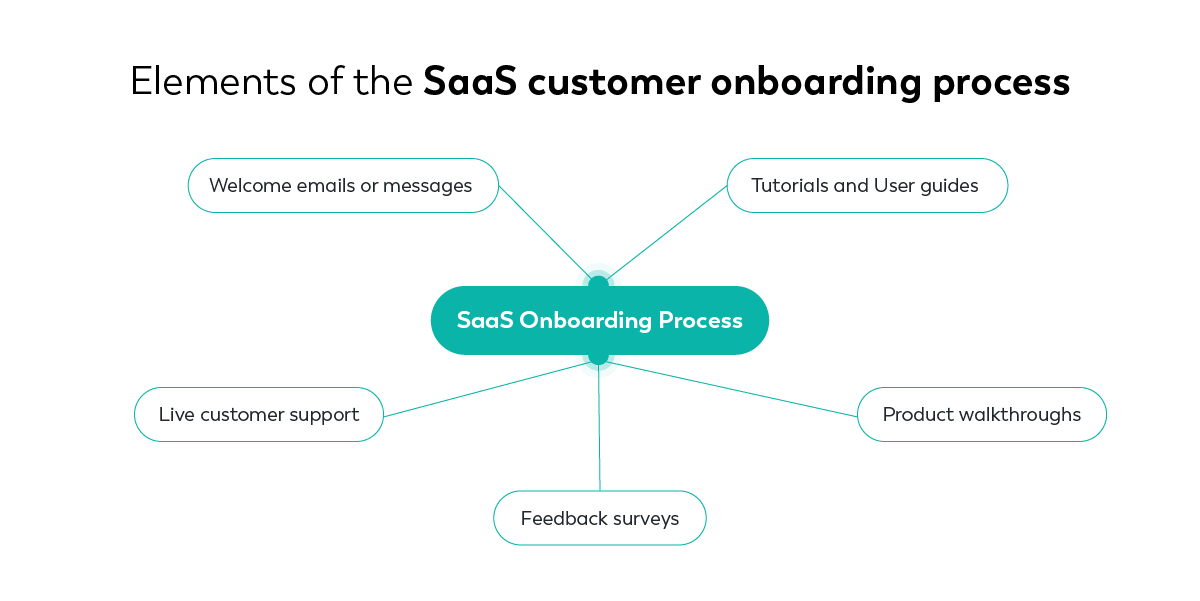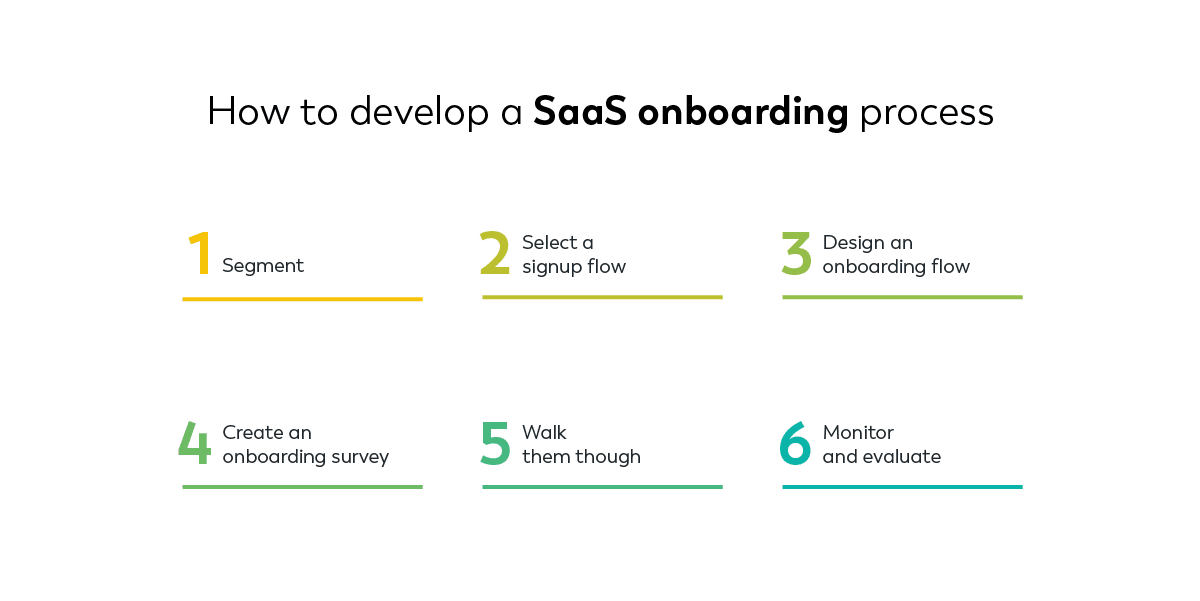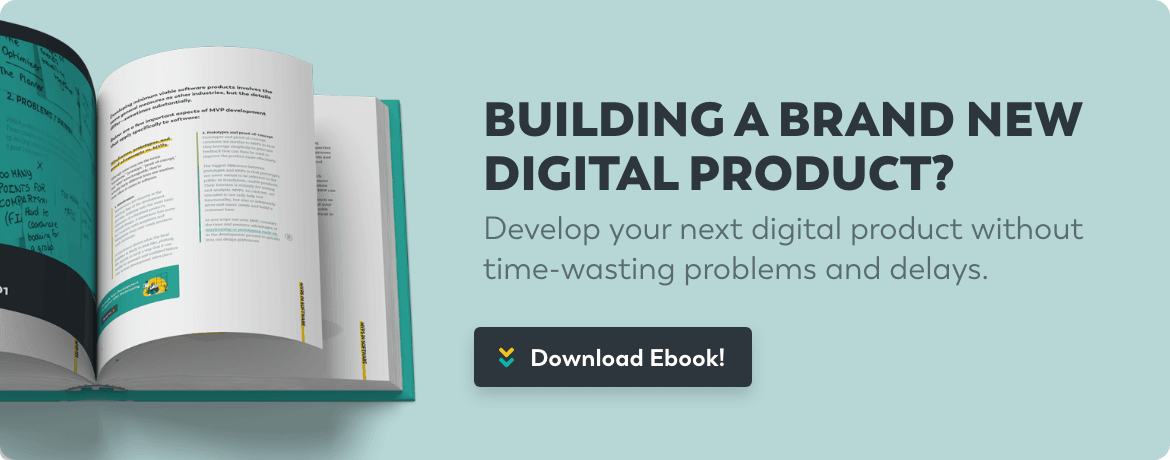SaaS businesses often overlook the importance of customer onboarding in their sales processes. Customer onboarding is essential to the success of any SaaS business because it plays a major role in customer satisfaction and loyalty.
Additionally, it sets the tone for the relationship between a customer and your business. It’s important to get it right to successfully retain customers, keep them engaged, and maximize customers’ lifetime value.
What is SaaS customer onboarding?
Customer onboarding means introducing a new customer to the products, services, and features offered by your SaaS business. It involves educating them on how to use your software, helping them set up their accounts, and providing guidance on using your product.
Primary onboarding is when customers are activated. For instance, when a customer has registered on your website and provided their payment details, they might be considered as primary onboarded.
Customer onboarding does not just end at primary activation. There should be regular check-ins, feedback surveys, and webinars.
Secondary onboarding begins through retention and secondary feature engagement. If a customer has already activated their account, for instance, they may need further guidance in setting up additional features.
Elements of the SaaS customer onboarding process
The onboarding process for SaaS customers should include a combination of automated and manual elements. Automated processes can move customers through the onboarding process quickly and efficiently. Meanwhile, manual processes ensure that customers receive the support they need along their journey.

The following elements are standard across customer onboarding processes:
- Welcome emails or messages
- Tutorials and user guides
- Live customer support
- Product walkthroughs
- Feedback surveys
Why should SaaS owners care about customer onboarding?
The main reason SaaS owners should care about customer onboarding is to ensure customers have the best possible experience when using their service. The smoother the onboarding process, the more likely customers will use it, refer others, and remain loyal.
In addition, customer onboarding is a great way to demonstrate value quickly and build trust with customers.
It’s like walking into a store. Suppose you’re greeted by a helpful salesperson who explains the different product categories and offers guidance on which option might be best for you. In that case, you’re much more likely to purchase something than if you were just left alone to wander around.
Customer onboarding provides a similar experience. It helps people understand what a product can do for them, increases the likelihood of success with it, and builds confidence in the company.
How to develop a SaaS onboarding process
There’s no one-size-fits-all approach to developing a SaaS onboarding process. Every company will have its individual needs. But some general steps can help ensure a successful onboarding process.

Step 1: Segment
Dividing your customers into different segments can help you create more personalized onboarding experiences. You should consider segmenting customers by industry, geographical location, size of the organization, usage goals, or even the type of application they’re using.
This will enable you to tailor your onboarding process better and craft messaging that speaks to each segment. In a B2B SaaS onboarding process, it could also be beneficial to segment customers by the number of users they plan to onboard.
Step 2: Select a signup flow
Typically, you can choose one of the two signup processes: frictionless or friction-based. The former is meant to be a simple and quick signup process, while the latter requires users to fill out more information about themselves.
For instance, in a frictionless signup, users may only have to fill in a few fields. You could ask them to enter their email and password. That’s it.
In the friction-based signup, users may have to provide more information. For example, you might require them to select a plan or enter their payment information. To most owners, it might not make sense to use a friction-based approach, as it only makes the onboarding process harder for users.
But there are some instances where this approach can be helpful for your business:
- If your product has a complex and technical integration for it to be of any value to the users
- If your product is highly regulated, like financial services or healthcare
- If the customer has no other choice but to use your product
Select your preferred approach based on your business goals and needs.
Step 3: Design an onboarding flow
The onboarding flow should be tailored to the needs of each segment. Your SaaS customer onboarding framework must be carefully designed and tested to ensure a smooth onboarding experience.
For instance, your onboarding process should be relatively quick and easy if you’re targeting small businesses. It should focus primarily on helping users learn your product’s basics so they can get up and running quickly.
On the other hand, if you’re targeting large enterprises, your onboarding flow should emphasize customization and integration.
Step 4: Create an onboarding survey
The onboarding survey is an essential part of the onboarding process. It helps you understand where the users came from and why they chose your product. It also allows you to gather feedback on their experience and identify opportunities for improvement.
For instance, you can ask the following questions:
- Where did you learn about our product?
- What made you choose our product over others?
- How easy or difficult was it to get started with the product?
- What will you use our product for?
Step 5: Walk them through
Now, it’s time to walk your customers through the onboarding process. The goal is to show them your product’s features. For example, if you’re offering a CRM, you’ll want to demonstrate how it can help them manage customer relationships.
You should provide step-by-step guidance to help them understand the product and its capabilities. You can also create helpful resources such as tutorials, videos, or webinars to simplify the onboarding process.
Create a SaaS customer onboarding checklist for users. However, keep it short and straightforward. You can show the customers that they’ve already completed one task by signing up. It will encourage them to finish the rest of the checklist.
Step 6: Monitor and evaluate
While primary onboarding may have ended here, secondary onboarding should start. Keep building relationships with your customers and monitor their progress. Offer support, feedback, and advice where needed. Here are some ways to accomplish this:
- Use a drip email sequence to send helpful tips and resources to customers.
- Set up in-app notifications to help customers find their way around the product.
- Conduct surveys regularly to ask customers for feedback.
- Create a webinar to explain the product’s features in detail and encourage customers to upgrade their subscriptions.
How to measure the success of your SaaS customer onboarding process
You can use a few SaaS customer onboarding metrics to determine how successful your onboarding process is. Here are some essential metrics to track:
Activation rate
Activation rate measures how many users completed the onboarding process and became active users. A high activation rate indicates a successful onboarding process. The formula for the calculation of activation rate is:
(number of users who complete a milestone / number of users who signed up) x 100
Retention rate
Retention is a crucial metric for measuring the success of any product. It reflects how many users are continuing to use your product after onboarding. You can calculate it using the following:
(number of paying users at the end of a period / total number of paying users at the start of the period) x 100
Ideally, you want to see this number increase over time.
Time to value
Time to value is the amount of time it takes for users to capture the value of your product. The faster a user can go from onboarding to engagement, the better.
You should try to keep the time to value to 10 minutes or less to get the best results. To measure it, have users fill out a customer satisfaction survey after they complete onboarding, which can help you assess how much time it took the customer to derive value from your product.
How can SaaS improve the onboarding experience?
Customer acquisition is only the first part of the journey for any SaaS business. After this, it’s essential to ensure a smooth onboarding process that doesn’t leave customers feeling overwhelmed or confused.
SaaS businesses can improve their onboarding experience by using SaaS customer onboarding software. This software helps in creating a seamless onboarding experience by streamlining the entire process and making it easier for customers to understand. Here are some good options:
Intercom
While it’s known as a communications platform, Intercom can also help in customer onboarding. For instance, it lets you show in-app messages and organize product tours for your customers. You can also send in-app notifications and emails to engage users and improve feature adoption.
Customer.io
Customer.io is a powerful onboarding software that allows you to create automated customer onboarding flows and campaigns. It lets you send the right message to the customer based on their action.
Zendesk
Zendesk provides a unified platform to manage customer support and onboarding. You can also use it to create a community forum or help center for customers.
Vimeo
If you want to include walkthrough videos in your onboarding process, Vimeo is a great option. It’s easy to use and lets you create high-quality videos that help customers understand your product better.
Great customer onboarding for high retention and engagement
Every SaaS business should focus on customer onboarding to ensure that users get the most out of their product or service and become highly engaged customers. When a customer has a good onboarding experience, they’re more likely to stick around and become loyal customers.
Creating a SaaS customer onboarding template for your business requires segmentation and an understanding of the customer journey. Couple this with customer onboarding software, and you’re good to go.
Take a look at our Customer Success resources to get more actionable insights on customer onboarding and other related topics.
